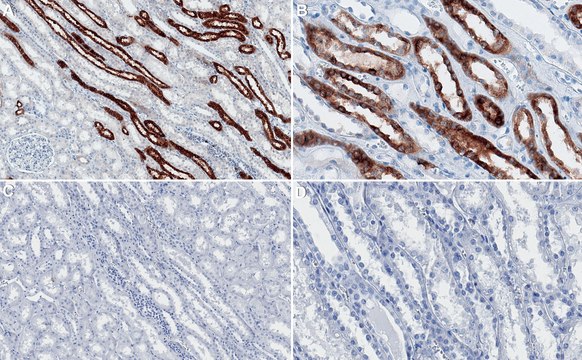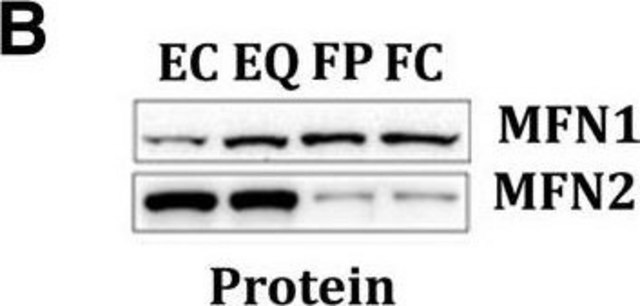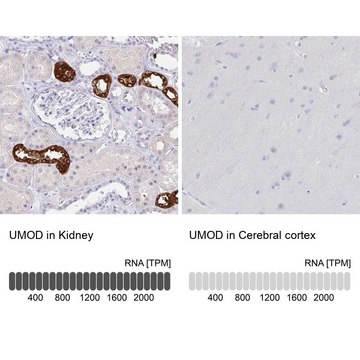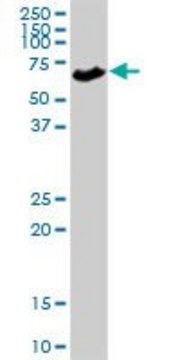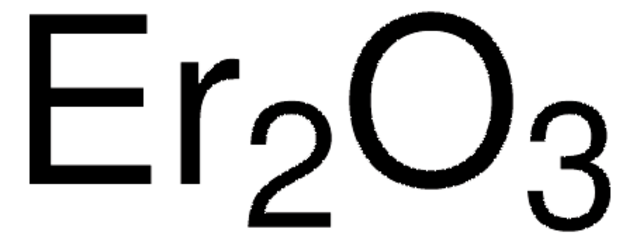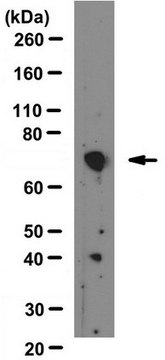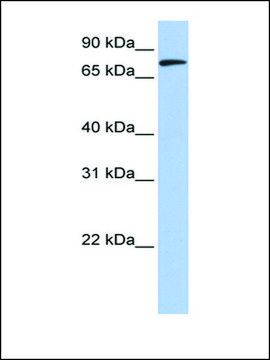Recommended Products
biological source
rabbit
Quality Level
antibody form
purified antibody
antibody product type
primary antibodies
mol wt
calculated mol wt 17.74 kDa
observed mol wt ~20 kDa
purified by
affinity chromatography
species reactivity
human
packaging
antibody small pack of 100 μg
technique(s)
immunocytochemistry: suitable
western blot: suitable
isotype
IgG
epitope sequence
Internal
Protein ID accession no.
UniProt accession no.
storage temp.
2-8°C
target post-translational modification
unmodified
Gene Information
human ... FUS(2521)
General description
AltFus (UniProt: A0A823ADP9; also known as Alt-Fus) is encoded by the FUS gene (Gene ID: 2521) in human. FUS is a nuclear RNA-binding protein with a C-terminal nuclear localization signal. It is involved in RNA processing, DNA repair, and cell proliferation. FUS is a dual coding gene that also codes for altFUS, a highly conserved, 170 amino acid protein that is endogenously expressed in many cell lines and tissues, including the motor cortex and motor neurons. Higher expression of FUS as well as altFUS contribute to neuronal toxicity. AltFUS is embedded within the FUS gene coding sequence. It is mainly a mitochondrial protein, but a weak cytoplasmic signal is also detected. Cells overexpressing altFUS display altered mitochondrial network, with a higher number of fragmented mitochondria. It can also lead to a loss in mitochondrial potential and accumulation of cytoplasmic aggregates. AltFUS is reported to inhibit autophagy and drive the accumulation of FUS- and TDP43-positive cytoplasmic aggregates. Suppression of its expression in a Drosophila model of FUS-related toxicity is shown to protect against neurodegeneration. (Ref.: Brunet, MA., et al. (3021). EMBO Rep. 22; e50640).
Specificity
This rabbit polyclonal antibody specifically detects a mitochondrial specific 170 amino acid protein
Immunogen
Linear peptides corresponding to 19 amino acids from the N-terminal region and 15 amino acids from the internal region of mitochondrial specific human altFUS.
Application
Quality Control Testing
Evaluated by Western Blotting in Human brain tissue lysates.
Western Blotting Analysis: A 1:1,000 dilution of this antibody detected altFUS in Human brain tissue lysates.
Tested Applications
Immunocytochemistry Analysis: A representative lot detected altFUS in Immunocytochemistry applications (Brunet, M.A., et. al. (2021). EMBO Rep. 22(1); e50640).
Note: Actual optimal working dilutions must be determined by end user as specimens, and experimental conditions may vary with the end user
Evaluated by Western Blotting in Human brain tissue lysates.
Western Blotting Analysis: A 1:1,000 dilution of this antibody detected altFUS in Human brain tissue lysates.
Tested Applications
Immunocytochemistry Analysis: A representative lot detected altFUS in Immunocytochemistry applications (Brunet, M.A., et. al. (2021). EMBO Rep. 22(1); e50640).
Note: Actual optimal working dilutions must be determined by end user as specimens, and experimental conditions may vary with the end user
Physical form
Purified rabbit polyclonal antibody in PBS with 0.01% sodium azide.
Reconstitution
1.0 mg/mL. Please refer to guidance on suggested starting dilutions and/or titers per application and sample type.
Storage and Stability
Recommended storage: +2°C to +8°C.
Other Notes
Concentration: Please refer to the Certificate of Analysis for the lot-specific concentration.
Disclaimer
Unless otherwise stated in our catalog or other company documentation accompanying the product(s), our products are intended for research use only and are not to be used for any other purpose, which includes but is not limited to, unauthorized commercial uses, in vitro diagnostic uses, ex vivo or in vivo therapeutic uses or any type of consumption or application to humans or animals.
WGK
WGK 2
Flash Point(F)
Not applicable
Flash Point(C)
Not applicable
Regulatory Information
新产品
Certificates of Analysis (COA)
Search for Certificates of Analysis (COA) by entering the products Lot/Batch Number. Lot and Batch Numbers can be found on a product’s label following the words ‘Lot’ or ‘Batch’.
Already Own This Product?
Find documentation for the products that you have recently purchased in the Document Library.
Our team of scientists has experience in all areas of research including Life Science, Material Science, Chemical Synthesis, Chromatography, Analytical and many others.
Contact Technical Service